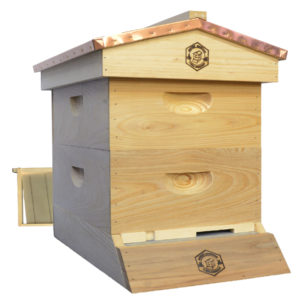Starting on the left foot
So I was struck by the insane notion that I might enjoy keeping honeybees. After a couple of evenings of research, I decided that I could plunk down a small hive in my side garden, buy (or trap) some bees, and be rewarded with some honey in the fall. Along the way I might learn a thing or two about one of nature’s more interesting creatures (the honey bee) and about the problems that they are encountering surviving in an environment complicated by invasive species.

A few more evenings poking around on the internet and I had ordered an “English Garden” hive from Brushy Mountain Bee, along with a couple of additional NUC boxes and I was all ready and set to order some bees and get on with this project. I was about to learn that there was a lot mort that I needed to learn before I could sit back, relax, and enjoy having a cool bee hive in the garden.
Digging in to Learn the Basics
There is an incredible volume of information on honey bees on the internet. Evening after evening was consumed in reading articles from around the world about different approaches, hive management philosophies, bee differences, beetles, mites, and approaches to pest management, bee types, and on and on and on.
In the time between researching and chasing down various inexplicable ‘bunny trails,’ I was spending time assembling hive woodwork and frames, carefully sanding and priming and painting. Then, back to more research and even more endless ‘bunny trails’ in the search for bee understanding. There is quite a range of opinions ranging from witchcraft to some very solid academic and scientific research. Some common themes seemed to emerge from all of this that:
- Pest management is an issue, whether the approach was praying for natural selection to provide strong bees or carefully managing chemical treatments.
- Preparing hives for winter survival needs to be a key component of any hive management approach,
- Hives need to be managed to prevent or control swarming.
Through all of my early research it became clear to me that while all North American beekeepers were addressing these issues, and there were a few accepted schools of thought in how to address them, the when of addressing issues seems to be determined by a mystical event known as the nectar flow.
Bee Keeping is a Local Endeavor
With the nectar flow being such a critical determining event for when everything happens in bee keeping, I turned my attention to trying to learn a little bit about the nectar flow in my area (Baltimore County, Maryland). In researching this, I came across the research of George W. Imirie Jr. George was a serious scientist who studied honey bees in my area for 74years. What I learned from his publications and how they are affecting my next steps will be the subject of my next blog.